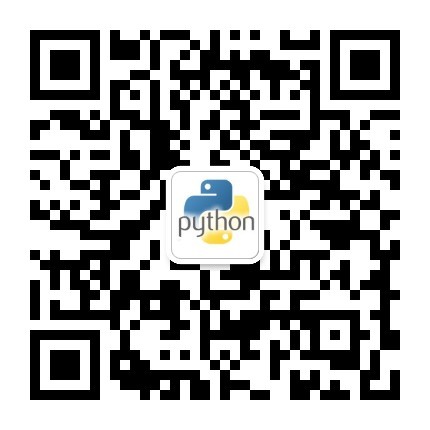爬虫入门【3】BeautifulSoup4用法简介
快速开始使用BeautifulSoup
首先创建一个我们需要解析的html文档,这里采用官方文档里面的内容:
html_doc = """
<html><head><title>The Dormouse's story</title></head>
<body>
<p class="title"><b>The Dormouse's story</b></p>
<p class="story">Once upon a time there were three little sisters; and their names were
<a href="http://example.com/elsie" class="sister" id="link1">Elsie</a>,
<a href="http://example.com/lacie" class="sister" id="link2">Lacie</a> and
<a href="http://example.com/tillie" class="sister" id="link3">Tillie</a>;
and they lived at the bottom of a well.</p>
<p class="story">...</p>
"""
要解析这段代码,需要导入BeautifullSoup,可以选择按照标准的缩进格式来输出内容:
from bs4 import BeautifulSoup#导入BeautifulSoup的方法
#可以传入一段字符串,或者传入一个文件句柄。一般都会先用requests库获取网页内容,然后使用soup解析。
soup=BeautifulSoup(html_doc,'html.parser')#这里一定要指定解析器,可以使用默认的html,也可以使用lxml比较快。
print(soup.prettify())#按照标准的缩进格式输出获取的soup内容。
<html>
<head>
<title>
The Dormouse's story
</title>
</head>
<body>
<p class="title">
<b>
The Dormouse's story
</b>
</p>
<p class="story">
Once upon a time there were three little sisters; and their names were
<a class="sister" href="http://example.com/elsie" id="link1">
Elsie
</a>
,
<a class="sister" href="http://example.com/lacie" id="link2">
Lacie
</a>
and
<a class="sister" href="http://example.com/tillie" id="link3">
Tillie
</a>
;
and they lived at the bottom of a well.
</p>
<p class="story">
...
</p>
</body>
</html>

#几种简单浏览结构化数据的方法:
print(soup.title)#获取文档的title
print(soup.title.name)#获取title的name属性
print(soup.title.string)#获取title的内容
print(soup.title.parent.name)#获取title的parent名称,也就是head,上一级.
print(soup.p)#获取文档中第一个p节点
print(soup.p['class'])#获取第一个p节点的class内容
print(soup.a)#获取文档的第一个a节点
print(soup.find_all('a'))#获取文档中所有的a节点,返回一个list
soup.find(id='link3')#获取文档中id属性为link3的节点
<title>The Dormouse's story</title>
title
The Dormouse's story
head
<p class="title"><b>The Dormouse's story</b></p>
['title']
<a class="sister" href="http://example.com/elsie" id="link1">Elsie</a>
[<a class="sister" href="http://example.com/elsie" id="link1">Elsie</a>, <a class="sister" href="http://example.com/lacie" id="link2">Lacie</a>, <a class="sister" href="http://example.com/tillie" id="link3">Tillie</a>]
<a class="sister" href="http://example.com/tillie" id="link3">Tillie</a>
for link in soup.find_all('a'):
print(link.get('href'))#获取a节点的href属性
http://example.com/elsie
http://example.com/lacie
http://example.com/tillie
#print(soup.get_text())
print(soup.text)#两种方式都可以返回获取的所有文本
The Dormouse's story
The Dormouse's story
Once upon a time there were three little sisters; and their names were
Elsie,
Lacie and
Tillie;
and they lived at the bottom of a well.
...
对象的种类
其实HTML文档包含了很多的节点,这些节点一般可以归纳为4类,Tag,NavigableString,BeautifulSoup,Comment。
Tag
Tag就是html文档中的一个个标签。
主要介绍Tag的name和attributes属性。
soup = BeautifulSoup('<b class="boldest">Extremely bold</b>','html.parser')
tag = soup.b
type(tag)
bs4.element.Tag
#Name
#属性通过.name来获取
#如果改变tag的name,那么所有当前BS对象的HTML文档都会改变。
print(tag.name)
tag.name='blockquote'
print(tag)
b
<blockquote class="boldest">Extremely bold</blockquote>
#Attributes
#获取方法比较简单,直接使用tag['attr_name']即可
#或者直接tag.attrs,可以返回所有的属性组成的字典。
print(tag['class'])
print(tag.attrs)
#tag的属性可以被删除或者修改,添加,与字典的操作方式一样
tag['class']='verybold'
tag['id']=1
print(tag)
#删除Tag的属性使用del方法
del tag['id']
verybold
{'id': 1, 'class': 'verybold'}
<blockquote class="verybold" id="1">Extremely bold</blockquote>
#有时候一个属性可能存在多个值,比如class,那么就会返回一个list
css_soup = BeautifulSoup('<p class="body strikeout"></p>','html.parser')
print(css_soup.p['class'])
['body', 'strikeout']
#将tag转换成字符串时,多值属性会合并为一个值;
rel_soup = BeautifulSoup('<p>Back to the <a rel="index">homepage</a></p>','html.parser')
rel_soup.a['rel'] = ['index', 'contents']
print(rel_soup.p)
#xml格式的文档不包含多值属性。
<p>Back to the <a rel="index contents">homepage</a></p>
NavigableString
可以遍历的字符串。
字符串通常被包含在tag内,BS用NavigableString类来包装tag中的字符串。
print(type(tag.string))#也就是tag的字符内容,<>string<>
<class 'bs4.element.NavigableString'>
#tag中的字符串不能编辑,但是可以替换成其他字符串
tag.string.replace_with('No longer bold')
print(tag)
<blockquote class="verybold">No longer bold</blockquote>
遍历文档数
还拿之前的html_doc来举例,演示如何从一段内容找到另一段内容。
soup=BeautifulSoup(html_doc,'html.parser')
子节点
一个tag可能包含多个字符串或者其他tag,都是这个tag的子节点。
#如果想要获取当前名字的第一个tag,直接用.tag_name就可以实现
print(soup.a)
#如果想要获取当前名字的所有tag,需要用find_all('tag_name')才可以
print(soup.find_all('a'))
#tag的.contents属性可以将tag的子节点以-列表-的方式输出
head_tag=soup.head
print(head_tag.contents)
#通过tag的.children生成器,可以对tag的子节点进行循环,(直接子节点)
for child in head_tag.children:
print(child)
#.descendants属性可以对所有tag的子孙节点进行递归循环:
for child in head_tag.descendants:
print(child)
#.string属性,如果tag只有一个NavigableString类型子节点,那么这个tag可以使用.string得到子节点:
#如果包含多个子节点,tag就无法确定.string的方法应该调用哪个子节点,所以输出None。
#如果tag中包含多个字符串,可以用.strings来循环获取,输出的字符串可能包含多个空格或空行,
#使用.stripped_strings可以去除多余空白内容。
for string in soup.stripped_strings:
print(repr(string))
父节点
每个tag或字符串都由父节点,也就是包含在某个tag中。
#.parent属性,用于获取某个元素的父节点,比如:
title_tag=soup.title
print(title_tag.parent)
#文档title的字符串也有父节点,title标签
#.parents,可以遍历tag到根节点的所有节点。
<head><title>The Dormouse's story</title></head>
兄弟节点
一段文档以标准格式输出时,兄弟节点有相同的缩进级别.
.next_sibling和.previous_sibling属性,用来查询兄弟节点:
.next_siblings和.previous_siblings属性,可以对当前节点的兄弟节点迭代输出。
回退和前进
.next_element 和 .previous_element属性指向解析过程中的下一个或者上一个解析对象。
.next_elements 和 .previous_elements属性,上或者下解析内容,列表。
搜索文档树
查找解析文档中的标签节点
#1、传入字符串
soup.find_all('b')#查找所有<b>标签
#2、正则表达式
import re
for tag in soup.find_all(re.compile('^b')):
print(tag.name)
#3、传入列表参数
soup.find_all(['a','b'])#查找所有的<a><b>标签
#4、True参数,可以匹配任何值,
#5、如果没有合适的过滤器,还可以定义一个方法,方法只接受一个元素参数,如果这个方法返回True,表示匹配到元素
def has_class_but_no_id(tag):
return tag.has_attr('class') and not tag.has_attr('id')
#可以将上面方法传入find_all()方法
soup.find_all(has_class_but_no_id)
#通过一个方法来过滤一类-标签属性-的时候,这个方法的参数是要被过滤的属性的值,而不是这个标签。
def not_lacie(href):
return href and not re.compile('lacie').search(href)
soup.find_all(href=not_lacie)#找出href属性不符合指定正则的标签。
find_all()方法
find_all( name , attrs , recursive , string , **kwargs )
搜索当前tag的所有子节点,并且判断是否符合过滤器的条件
#name参数,查找所有名字为name的tag,字符串对象被忽略。
soup.find_all('title')
#keyword参数,如果一个指定名字的参数不是搜索内置的参数名,搜索时会把该参数当作指定名字tag的属性来搜索。
soup.find_al(id='link2')
soup.find_all(href=re.compile('elsie'))
#如果多个指定名字的参数可以同时过滤tag的多个属性:
soup.find_all(href=re.compile('elsie'),id='link1')
#有些tag属性在搜索不能使用,比如HTML5中的data*属性,但是可以通过find_all()的attrs参数定义一个字典来搜索:
data_soup.find_all(attrs={'data-foo':'value'})
按css搜索
#BS4.1开始,可以通过class_参数搜索具有指定css类名的tag:
soup.find_all('a',class_='sister')
#接受通过类型的过滤器,比如正则表达式
soup.find_all(class_=re.compile('it1'))
string参数
soup.find_all(string='Elsie')
limit参数
可以用来限制返回结果的数量
recursive参数
如果指向搜索tag的直接子节点,可以使用参数recursive=False。
像调用find_all()一样来调用tag
每个tag对象可以被当作一个方法来使用,与调用find_all()方法相同。
soup.find_all('a')
soup('a')#这两句代码时等价的
find()方法
与find_all()相同的用法,但是只能返回一个结果。
CSS选择器,select方法
soup.select('title')#选择title标签
soup.select('p nth-of-type(3)')
#通过tag标签逐层查找
soup.select('body a')#查找body标签下面的a标签
#找到某个tag标签下的直接子标签:
soup.select('head>title')
#通过id来查找:
soup.select('#link1')
#通过class来查找:
soup.select('.sister')
soup.select('[class~=sister]')
#通过是否存在某个属性来查找:
soup.select('a[href]')
#通过属性的值来查找:
soup.select('a[href="http://www.baidu.com"]')
如果您觉得感兴趣的话,可以添加我的微信公众号:一步一步学Python

爬虫入门【3】BeautifulSoup4用法简介的更多相关文章
- 【爬虫入门01】我第一只由Reuests和BeautifulSoup4供养的Spider
[爬虫入门01]我第一只由Reuests和BeautifulSoup4供养的Spider 广东职业技术学院 欧浩源 1.引言 网络爬虫可以完成传统搜索引擎不能做的事情,利用爬虫程序在网络上取得数据 ...
- Python爬虫入门之Urllib库的高级用法
1.设置Headers 有些网站不会同意程序直接用上面的方式进行访问,如果识别有问题,那么站点根本不会响应,所以为了完全模拟浏览器的工作,我们需要设置一些Headers 的属性. 首先,打开我们的浏览 ...
- Python爬虫入门四之Urllib库的高级用法
1.设置Headers 有些网站不会同意程序直接用上面的方式进行访问,如果识别有问题,那么站点根本不会响应,所以为了完全模拟浏览器的工作,我们需要设置一些Headers 的属性. 首先,打开我们的浏览 ...
- 转 Python爬虫入门四之Urllib库的高级用法
静觅 » Python爬虫入门四之Urllib库的高级用法 1.设置Headers 有些网站不会同意程序直接用上面的方式进行访问,如果识别有问题,那么站点根本不会响应,所以为了完全模拟浏览器的工作,我 ...
- 爬虫入门四 re
title: 爬虫入门四 re date: 2020-03-14 16:49:00 categories: python tags: crawler 正则表达式与re库 1 正则表达式简介 编译原理学 ...
- 爬虫入门二 beautifulsoup
title: 爬虫入门二 beautifulsoup date: 2020-03-12 14:43:00 categories: python tags: crawler 使用beautifulsou ...
- Python简单爬虫入门三
我们继续研究BeautifulSoup分类打印输出 Python简单爬虫入门一 Python简单爬虫入门二 前两部主要讲述我们如何用BeautifulSoup怎去抓取网页信息以及获取相应的图片标题等信 ...
- Python爬虫入门一之综述
大家好哈,最近博主在学习Python,学习期间也遇到一些问题,获得了一些经验,在此将自己的学习系统地整理下来,如果大家有兴趣学习爬虫的话,可以将这些文章作为参考,也欢迎大家一共分享学习经验. Pyth ...
- Docker新手入门:基本用法
Docker新手入门:基本用法 1.Docker简介 1.1 第一本Docker书 工作中不断碰到Docker,今天终于算是正式开始学习了.在挑选系统学习Docker以及虚拟化技术的书籍时还碰到了不少 ...
随机推荐
- OPENDJ的安装图文说明
一. 说明 介绍: opendj是一个ldap服务器 用于存储openam的配置和用户存储信息 准备工具: OpenDJ-3.0.0.zip 二. 安装步骤 a) Linux安装过程 1. 将zip包 ...
- Tomcat:Java Web服务器配置详解
一.Tomcat概述 1.tomcat简介 tomcat是基于JDK的web服务器,其能运行Servlet和JSP规范总.Tomcat 5支持最新的Servlet 2.4 和JSP 2.0规范.实际上 ...
- Python开发easy忽略的问题
这篇文章主要介绍了Python程序猿代码编写时应该避免的17个"坑",也能够说成Python程序猿代码编写时应该避免的17个问题,须要的朋友能够參考下 一.不要使用可变对象作为函数 ...
- 查找文件命令find总结以及查找大文件
find / -name *** 示例如下: [dinpay@zk-spark-01 spark]$ find /home/ll -name slaves /home/ll/spark/conf/sl ...
- 2017.4.12 开涛shiro教程-第十八章-并发登录人数控制
原博客地址:http://jinnianshilongnian.iteye.com/blog/2018398 根据下载的pdf学习. 开涛shiro教程-第十八章-并发登录人数控制 shiro中没有提 ...
- Elasticsearch 基础使用
使用 cURL 执行 REST 命令 可以对 Elasticsearch 发出 cURL 请求,这样很容易从命令行 shell 体验该框架. “Elasticsearch 是无模式的.它可以接受您提供 ...
- vscode - emmet失效?
把emmet设置覆盖为用户.
- 打造你的前端神器-webstorm11
说起前端编辑器,用过dw,sublime,hbuilder,webstorm也不陌生,之前的版本8有用过一下,但是觉得比sublime重量太多,但是随着后来用node的开始,发现需要打造个web前端神 ...
- lodash 数组元素查找 findIndex
_.findIndex(array, [predicate=_.identity]) 这个方法类似 _.find.除了它返回最先通过 predicate 判断为真值的元素的 index ,而不是元素本 ...
- vue created 生命周期
在实例创建完成后被立即调用.在这一步,实例已完成以下的配置:数据观测 (data observer),属性和方法的运算,watch/event 事件回调.然而,挂载阶段还没开始,$el属性目前不可见. ...
